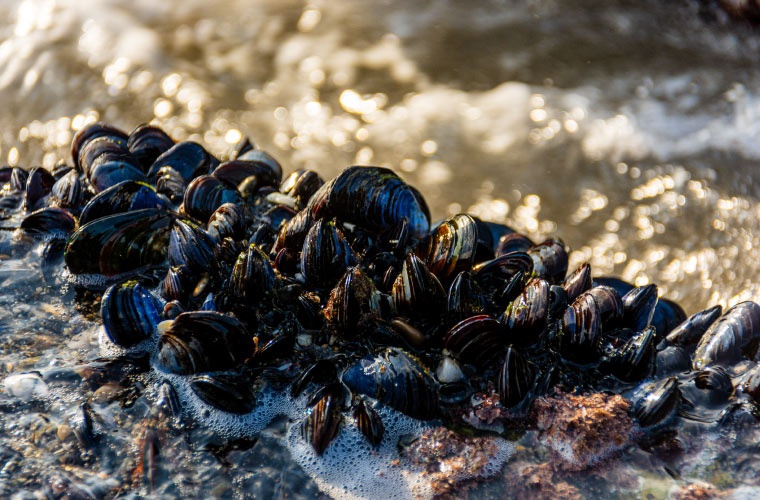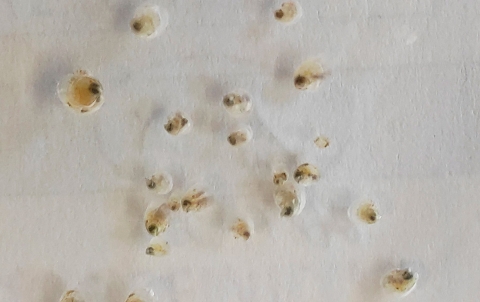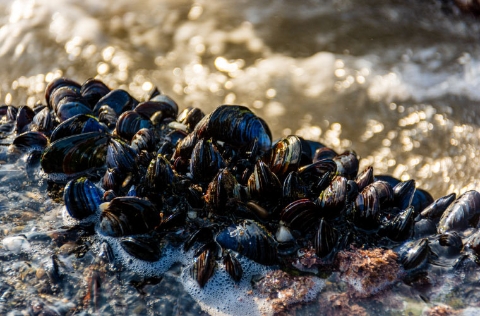
Researchers from the University of Vigo have achieved a major scientific milestone that could transform mollusc aquaculture and reduce dependence on the unpredictable availability of wild mussel seed.
Traditionally, mussel farming relies heavily on collecting spat from natural beds or from ropes suspended beneath floating rafts. However, increasing environmental variability—driven by climate change, pollution, and algal blooms—is threatening the consistency and sustainability of this model. In response, cryopreservation has emerged as a promising strategy to stabilise production and safeguard genetic resources.
To address these challenges, scientists from the Marine Research Centre (CIM) at the Universidade de Vigo—Aida Lago, José Troncoso and Eva Paredes—have developed the first successful cryopreservation protocol for juvenile mussels (Mytilus galloprovincialis) over 1 mm in size. According to their study, published in Scientific Reports, this marks the first time that the juvenile stage of a marine organism of this size and complexity has been cryopreserved.
The researchers extended their existing larval cryopreservation protocols to cover every developmental stage—from 24 hours after fertilisation to 45 days post-fertilisation. Earlier protocols had only reached up to the 72-hour larval stage. The latest breakthrough includes the successful preservation of juvenile mussels with fully developed organs, comparable to adult individuals in terms of complexity.
Achieving this required extensive optimisation of cryoprotectant concentrations, feeding strategies, and environmental conditions such as temperature and salinity. A key finding was that feeding larvae prior to freezing improved survival and development outcomes. Fed larvae showed higher rates of normality and larger size after thawing—demonstrating, for the first time, that nutrition enhances cryotolerance in complex marine larvae.
Particularly noteworthy is the successful cryopreservation of juveniles at 40 and 45 days post-fertilisation. These mussels, around 1 mm in length, are significantly more complex than earlier larval stages. By adjusting the cryoprotectant formula—raising ethylene glycol from 10% to 12%—the team was able to increase post-thaw survival from 13% to 66%.
At 45 days, survival rates remained above 60% at 24 hours after thawing, with over 90% of juveniles maintaining normal anatomical structure. This achievement places the research at the forefront of organismal cryopreservation, an emerging field with very few successful precedents in animals of this complexity.
This advance opens the door to cryobanking of mussel seedstock for hatcheries, reducing pressure on natural recruitment cycles and helping ensure continuity of supply during environmental disruptions. It also offers a valuable tool for maintaining genetic lines, restoring overexploited natural beds, and supporting selective breeding programmes.
The study was supported by the Xunta de Galicia, Spain’s Ministry of Science and Innovation, and EU NextGenerationEU recovery funds. The research forms part of the Galicia Marine Science programme and received technical support from the ECIMAT marine station.
Reference:
Lago, A., Troncoso, J. & Paredes, E. (2025). Cryopreservation of juvenile Mytilus galloprovincialis to safeguard mollusk biodiversity and support aquaculture. Scientific Reports, 15, 25587. https://doi.org/10.1038/s41598-025-11439-3



